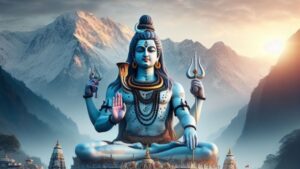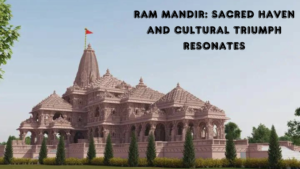Biography of Hayao Miyazaki: The Master of Animation
Various critics recognize Hayao Miyazaki as the creator of visionary animated films that established themselves as masterpieces within film history. Through his establishment of Studio Ghibli Miyazaki has built a permanent legacy in animation by fusing realistic environments with profound narratives and touching human elements. Through his time at Toei Animation followed by his achievements at Studio Ghibli Miyazaki earned global recognition that placed him among the all-time great filmmakers.
Early Life and Influences
As the future master of animation, Hayao Miyazaki was born on January 5, 1941, in Tokyo, Japan. He spent much of his life working as the director of fighter plane parts production at his company Katsuji Miyazaki served as his father. He explored aviation influences in his subsequent films beginning with Porco Rosso and then The Wind Rises. Although his mother was bedridden from tuberculosis during most of Hayao’s early childhood, she had a strong character that helped fuel his imagination while isolating him.
Miyazaki captures the lives of people through his stories, which makes them relatable. He blends Western and Japanese art, building his character. This passion drove him to sketch throughout his childhood. During high school, animation became the center of his interests, which led to pursuing studies at Gakushuin University, where he focused on illustration and animation, deviating from coursework
Career Beginnings
Miyazaki began working as an in-between animator at Toei Animation in 1963 shortly after graduation. At Toei, he worked on a number of television shows and films, but it is clear that the sheer amount of creativity and ambition Miyazaki possessed set him apart from others. He worked on various projects such as The Little Norse Prince in 1968 which was his first directorial venture. His unique style gradually started to take shape as abundant hand-drawn animation and vibrant fantastical worlds.
Miyazaki had managed to achieve quite a lot in the beginning of his career. However, he had always faced issues working within the confinements of a large studio environment. The rigid boundaries of creativity caused him a lot of frustration, which made him focus on personal vision instead. In turn, this led him to work with fellow animator Isao Takahata, with whom he co-founded Studio Ghibli in 1985.
The Birth of Studio Ghibli
Studio Ghibli became a groundbreaking force in animation, largely thanks to Miyazaki’s visionary leadership and storytelling prowess. The studio’s first major success, Castle in the Sky (1986), set the tone for what would become a legacy of stunning films. Miyazaki’s commitment to beautiful, hand-drawn animation and intricate, emotionally resonant stories quickly gained worldwide attention. Castle in the Sky was followed by My Neighbor Totoro (1988), which became one of Miyazaki’s most beloved films. The character Totoro, a large, mystical creature, became an iconic figure of Studio Ghibli, representing the company’s values of wonder, innocence, and a deep connection with nature.
In the 1990s, Miyazaki continued to refine his craft, producing masterpieces like Kiki’s Delivery Service (1989), Princess Mononoke (1997), and Spirited Away (2001). Spirited Away is perhaps his most widely recognized work, winning the Academy Award for Best Animated Feature and bringing global recognition to the Studio Ghibli brand. The film tells the story of Chihiro, a young girl who is trapped in a mystical world and must navigate its strange and often frightening inhabitants. The film’s rich symbolism, environmental themes, and exploration of childhood innocence resonated with audiences around the world.
Themes and Style
Miyazaki’s films are their very own complex masterpieces and each comes with an array of philosophical ideas to ponder upon. One of the most recurring themes found in all his works is the conflict between humans and nature. Princess Mononoke explores how nature suffers due to the relentless march of progress. On the other hand, Naussicaä of the Valley of the Wind (1984) shows a future where humanity needs to grapple with a ravaged, dying planet. His protagonists are always somewhat paradoxical, multi-layered and never straightforward, which makes them far more interesting and relatable.
Miyazaki considers personal development and growth, resiliency, and imagination as themes of great importance. His leading ladies—Nausicaä, Kiki, Chihiro—are not only teenage girls, but strong spirited females who embark on wonderful journeys of self-exploration. These characters have motivated innumerable people, especially young women, by presenting them with constructive images of female empowerment and resilience.
Miyazaki’s art style features an array of moving pieces with vivid backdrops and stunning character designs set in motion in breathtaking animation sequences. He employs broad and lofty panning to capture astonishment, wonder and the overall magnificence of the scenery. Moreover, his graceful and exciting action scenes further add to his already amazing films. It is evident that he captures movement in artful ways and even the simplest of actions becomes full of life and emotion.
Legacy and Later Years
Miyazaki’s influence on both the world of animation and filmmaking in general is immeasurable. His work has inspired countless filmmakers, animators, and artists. He has received numerous awards, including the Academy Award for Best Animated Feature, the Golden Bear at the Berlin International Film Festival, and Japan’s highest honors for art and culture.
Despite his many accolades, Miyazaki has repeatedly stated that he has considered retiring. In 2013, he announced his retirement after completing The Wind Rises (2013), a film about a young engineer who designs fighter planes. However, in 2016, Miyazaki came out of retirement to begin work on a new project, How Do You Live?, based on the novel by Yoshino Genzaburo. This new project is expected to be another masterwork that will further cement his legacy.
Miyazaki’s films continue to be celebrated for their emotional depth, breathtaking animation, and profound insights into the human condition. As long as there are stories to be told through animation, Hayao Miyazaki’s influence will endure, ensuring that his place in cinematic history remains secure.
Conclusion
Hayao Miyazaki’s work transcends the realm of animation and filmmaking. His films, with their deeply human themes, complex characters, and visually stunning worlds, have touched the hearts of audiences worldwide. As an artist, he has challenged conventions, pushed the boundaries of animation, and crafted stories that resonate with both children and adults. His legacy is not just in the films he created, but in the hearts and minds of those who have experienced the magic of his imagination.
Also Read :- https://hindustanslive.com/entertainment/ghibli-films-list-exploring-ghiblis-visual-brilliance-through-ai-art/











